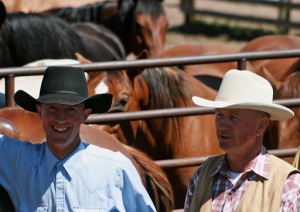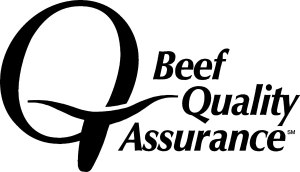CattleFax Predicts Large Supply and Strong Demand in 2018
CattleFax celebrated its 50th anniversary during the popular CattleFax Outlook Session at the 2018 Cattle Industry Convention and NCBA Trade Show. CattleFax Senior Analyst Kevin Good highlighted the industry’s profitability during 2017 and said the trend looks to continue into 2018.
CattleFax analysts told the audience U.S beef cow inventory increased 2.8 million head in four years, and an additional 200,000-400,000 head are expected to be added to the herd over the next few years. Good said there are growing supplies of protein coming to market during the year ahead, including large supplies of competing proteins, which will weigh on all beef prices.
“We have a bigger supply of all proteins ahead in 2018. For the past year we were very fortunate to have solid export volume,” said Good. “We are forecasting trade to increase year-over-year in 2018, but still, the rate of production is out-pacing the rate of exports.”
Although beef production is expected to increase to 27.5 billion pounds during 2018, Good said current consumer demand is expected to remain good and potentially increase as retail prices moderate. He said CattleFax is predicting beef to remain a strong competitor against other proteins.
“Demand is robust on all fronts. Domestically, retail demand is increasing and beef is being featured more in the consumer markets,” said Good. “The retail and foodservice industries are doing very well and the solid economy in the United States is one of the main drivers as unemployment rates continue to decline and per capita income rises.”
Good said even though beef demand is high, leverage will continue to be a challenge for the feedlot and packing segments as shackle space becomes increasingly constrained by rising slaughter rates. With the growth in production, Good said he anticipates lower, but still profitable price levels for the cow-calf segment, while feeders and backgrounders will see their margins narrow.
Input costs are expected to remain manageable, with grain prices expected to remain steady. According to CattleFax, yields will drive corn prices in 2018-19 marketing year with no significant changes anticipated in acreage or demand. Futures corn prices are projected to range from $3.25 to $3.95 per bushel as supplies remain adequate. With more livestock to feed in 2018 and the smallest acreage on record in 2017, CattleFax predicts hay prices will increase $10-$15 per ton with additional weather-related price risks.
Drought conditions have been spreading across the United States since last winter with the Southwest being impacted the most. Art Douglas, professor emeritus, Creighton University, predicts a possible transition from La Niña conditions to a weaker El Niño by summer. U.S. weather patterns over the next three months will be dictated by La Niña. However, equatorial warming could shift drought patterns across North America by late spring and summer.
During the session, CattleFax analysts predicted fed cattle prices lower than prior year levels, averaging $115 per hundredweight (cwt.). Good said fed cattle prices are likely to face resistance near the $130 level, with downside risk in the upper $90 range. He predicted bargaining position will continue to favor cattle processors and retailers, with profit margins at or above 2017 levels.
CattleFax projected 750-pound steers will average $1 lower than 2017 levels at $145/cwt., with a range from the upper $120s to $160/cwt. Meanwhile, U.S. average 550-pound steer calves will see a trading range from $170/cwt. at the spring high to an average price in the upper $130s, during the fall marketing season. For the full year, calf prices are expected to average $158/cwt.
To see more from the CattleFax Outlook Session or to become a member, visit www.cattlefax.com.





 As fall work starts to wind down, thoughts might turn to preparing for the next year of production and all the supplies that come with it. Vaccines are an important part of a herd health program, and this piece will cover some background and considerations about vaccines and beef cattle production. This overview is not meant to recommend vaccination programs, but will provide definitions of terminology and suggestions for effective vaccination.
As fall work starts to wind down, thoughts might turn to preparing for the next year of production and all the supplies that come with it. Vaccines are an important part of a herd health program, and this piece will cover some background and considerations about vaccines and beef cattle production. This overview is not meant to recommend vaccination programs, but will provide definitions of terminology and suggestions for effective vaccination.









